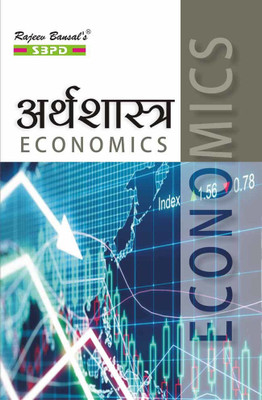Arthashastra (Economics) - First Paper: Development and Environmental Economics Second Paper: Statistical Methods (Syllabus Prescribed By New Education Policy) 1 Edition(Paperback, Dr. Anupam Agarwal, Dr. Alok Gupta)
Quick Overview
Product Price Comparison
Economics Books in Hindi a Book Contents: UNIT - I Development and Environmental Economics: 1.Economics Growth and Development : Concept, 2 .Determinants of Economic Development, 3. Factors Effecting Economic Growth-Labour, Capital & Technology, 4. Techniques of Development (Capital Intensive and Labour Intensive), 5. Developed and Under-Developed (Developing) Economy, 6. Poverty : Absolute and Relative, 7. The Marxian Model of Economic Growth, 8.The Mahalanobis Model, 9. Balanced and Unbalanced Growth 10. Population Problem and Growth Pattern of Population, 11. The Theory of Demographic Transition, 12. Population, Poverty and Environment, 13. SchumpeterŌĆÖs Theory of Economic Growth, 14. Big Push Theory, 15. NelsonŌĆÖs Theory of Low-Level Equilibrium Trap, 16. Theory of Critical Minimum Effort, 17. The Harrod and Domar Models, 18. SolowŌĆÖs Model of Economic Growth, 19.MeadŌĆÖs Economic Growth Theory, 20. Mrs. John RobbinsonŌĆÖs Growth Model, 21.Lewis Theory of Unlimited Supply of Labour, 22. Valuation of Environmental Damages : Land, Water, Air and Forest, 23. Control and Abatement of Population, 24.Environment Economy Linkage and Population Environment Linkage, 25. Environment as a Public Goods and Market Failure and Environment, 26 .Environmental Legislation, 27. Sustainable Development and Environmental Accounting, 28. Concept of Intellectual Capital : Food Security, Education, Health and Nutrition, 29. The Role of Agriculture in Economic Development and Importance of Land Reforms, 30. Technological Changes and Development in Agriculture, 31. Sustainable Agriculture, 32. Globalization and Agriculture Growth, UNIT - II Statistical Methods: 1.Statistics : Meaning, Nature and Limitations, 2. Statistics : Scope and Importance, 3. Statistical Investigation, 4. Sampling, 5. Collection of Data : Primary & Secondary Data, 6. Diagrammatic Presentation of Data, 7. Graphic Presentation of Data, 8. Measures of Central Tendency, 9. Measures of Skewness, 10. Probability Theory, 11. Measures of Dispersion, 12. Correlation, 13. Index Number, 14. Analysis of Time-Series.

